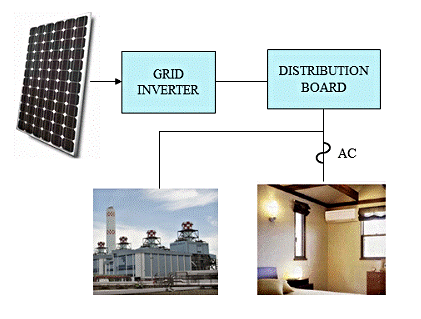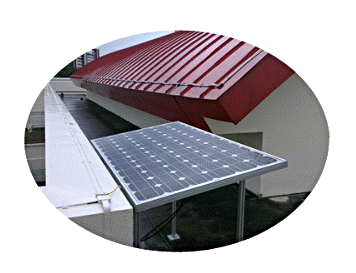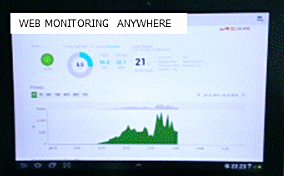SOLARON ENERGY ENTERPRISE

Photovoltaic Technology Leadership.
Solaron designs and delivers Solar Electric Generators based on 3 categories. Explained here in functional albeit highly simplified block diagram flows.



GRID TIED
Solar energy collected is conditioned and pumped into the utility grid.
As the sun shines, any power socket you use is actually powered by the sun.
When the sun is goes down, power comes back automatically from the utility grid.
Pros
Simple design, allowing for large scale installations.
No power disruptions should the sun stay away for long periods.
Cuts down on electricity generated from fossil fuels at the power station, offering clean energy and utility savings.
Solar electricity not used on site can be sold to utility for bill rebates.
Very appilcable to homes and sites that consume a lot of power in the day, such as from air conditioning.
Cons
Dependent on the utility grid for electrical synchronization.
Does not provide solar power in the night.
Typically, a minimum size of 2000W is required to generate significant financial payback.

STAND ALONE
Solar energy collected is stored in a battery.
Power is provided on demand by you.
A good design takes into account sunshine levels throughout the year, power of the solar panels and the capacity of the solar battery.
Power is available from the system day and night.
Pros
Independent energy anywhere, as no utility grid is needed.
Runs day and night.
Can be designed to be small and mobile.
Makes economic sense when utility grid power is not readily available.
Cons
Sizing up may be limited by the need for battery storage space.
Batteries have a cycle life. This is typically 2 years.
IMPEDANCE MATCHED
Solar energy is conditioned and used immediately to drive an electric motor.
A good design closely matches solar panel and motor impedances, allowing a smooth energy transfer with little waste.
Intended for daylight use on pumps and fans, with no grid or battery.
This is the most efficient method of using solar electric power.
Pros
Inexpensive.
Independent energy anywhere, with no battery or utility grid needed.
No battery to maintain and change.
Cons
Limited to daylight operation.
Know your investment
A solar electric generator does its work quietly without hum or buzz. Monitoring tools have been developed for you to see and appreciate how much power and energy is collected. This can be done at the equipment or remotely from the comfort of home.
For savvy investors who track the daily returns on their investments, monitoring is especially important...


